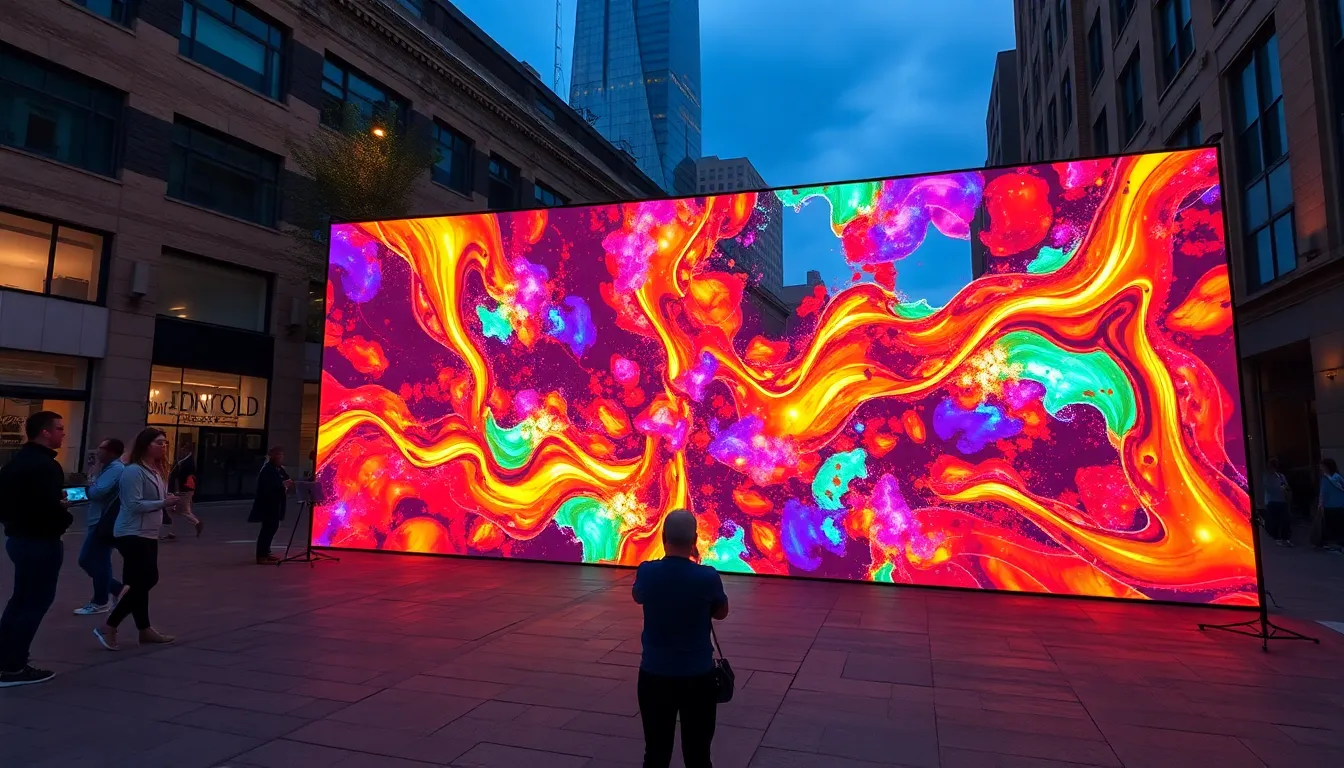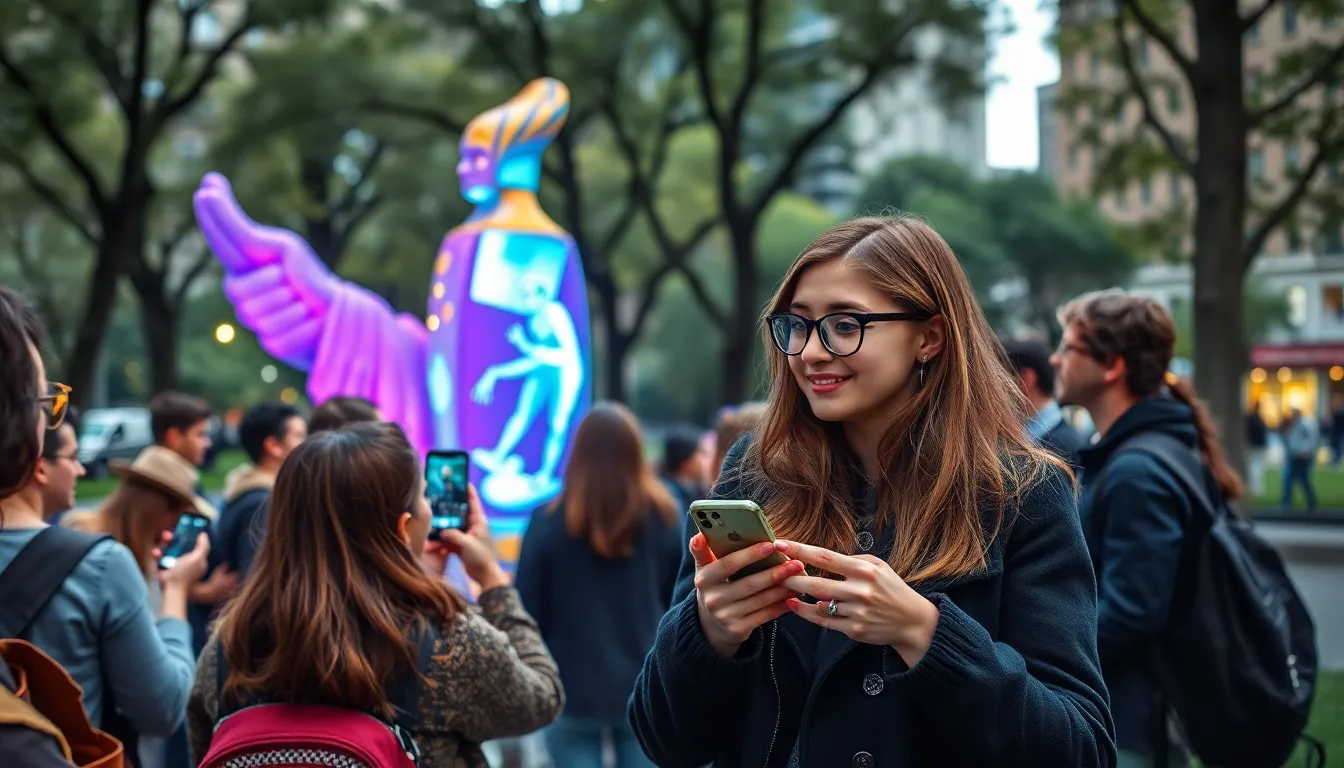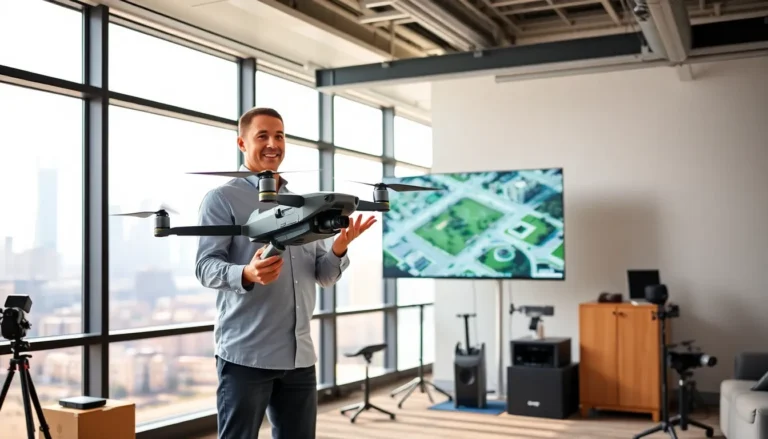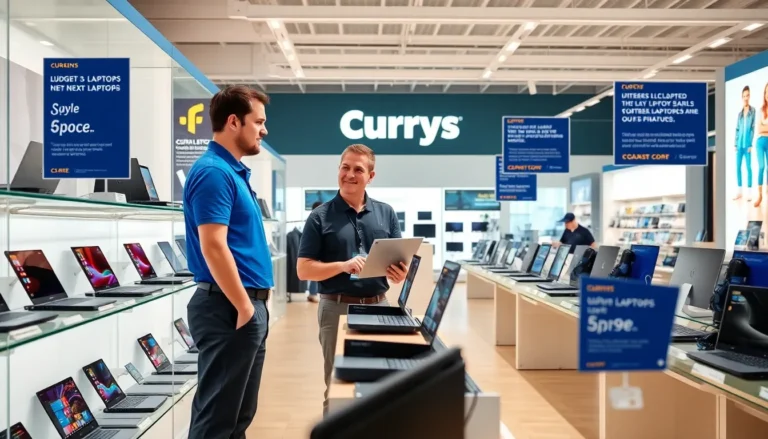Imagine walking through a gallery where the paintings leap off the walls and dance around you. Welcome to the whimsical world of augmented reality art, where creativity meets technology in a spectacular fusion. This innovative medium doesn’t just hang on a wall; it invites viewers to step inside the artwork and experience it like never before.
Table of Contents
ToggleOverview Of Augmented Reality Art
Augmented reality art merges digital elements with real-world environments, creating interactive experiences for the audience. This innovative medium allows artists to overlay digital creations onto physical spaces, altering perception and interaction. Viewers engage with artwork through devices like smartphones and tablets, transforming how art is experienced.
Digital tools play a crucial role in the creation process. Artists utilize software applications to design 3D models and animations, integrating them seamlessly into physical surroundings. The technology not only enhances visual storytelling but also makes art accessible to a wider audience through immersive installations.
Various projects exemplify the diversity of augmented reality art. For example, installations like “The Night Cafe” recreate a Van Gogh masterpiece in a 3D space, inviting exploration. Other projects employ geolocation features, allowing users to discover site-specific art while navigating urban environments.
Collaborations between artists and technologists often yield groundbreaking results. These partnerships enable the exploration of new themes, blurring the boundaries between different artistic disciplines. Diverse forms of expression emerge, from interactive sculptures to dynamic wall murals.
Engagement with augmented reality art promotes curiosity and encourages dialogue. This exchange between viewer and artwork fosters a deeper appreciation for both the piece and the technology behind it. By breaking traditional barriers, augmented reality art reshapes the future of artistic expression.
The Evolution Of Augmented Reality Art

Augmented reality art has transformed significantly, evolving from initial concepts to immersive experiences. This journey reflects the intersection of creativity and technological innovation.
Historical Context
The origins of augmented reality can be traced back to the late 1960s when Ivan Sutherland created the first head-mounted display. Early projects mostly focused on military and training applications, with artists beginning to explore the medium in the late 1990s. Significant milestones emerged as artists began integrating digital components into their work. For instance, in 2007, the term ‘augmented reality art’ gained traction, coinciding with the launch of smartphones. Artists like Keiichi Matsuda expanded boundaries, linking the digital with physical environments. This foundation paved the way for the growth of augmented reality as a distinct art form.
Technological Advancements
Technological advancements significantly shaped the development of augmented reality art. High-quality smartphones and tablets made accessing augmented reality experiences easier. In recent years, software development kits such as ARKit and ARCore enhanced capabilities for artists to create interactive art. Artists now leverage tools like 3D modeling software, motion tracking, and geolocation technology. These innovations allow for seamless integration of digital elements into real-world settings. Enhanced graphics capabilities elevate the visual appeal of the art, engaging viewers on a deeper level. Co-creation among artists and technologists pushes the envelope, ensuring augmented reality art continues evolving and captivating audiences.
Key Features Of Augmented Reality Art
Augmented reality art boasts several defining features that enhance viewer engagement and interaction.
Interactivity
Interactivity stands at the forefront of augmented reality art. Users can manipulate digital elements in real-time, allowing for personalized experiences. Artists design tailored interactions that invite exploration and participation. Viewers don’t simply observe artwork; they actively influence it, creating unique interpretations. Such engagement fosters a deeper emotional connection between the audience and the art. Projects often include touch-sensitive interfaces or motion-triggered animations, further enhancing user involvement.
Immersive Experience
Immersive experience defines augmented reality art’s impact on audiences. By merging digital visuals with physical surroundings, it transports viewers into new realms. This technology enables artists to craft environments that feel tangible and engaging. Visitors encounter 3D animations that emerge from the real world, altering spatial perception. Many installations encourage viewers to walk through or around the artwork, making them feel part of the narrative. Augmented reality art transforms traditional viewing into an active journey of discovery, captivating audiences in unprecedented ways.
Prominent Artists In Augmented Reality Art
Augmented reality art continually evolves through contributions from diverse artists who leverage technology to create immersive experiences. Various case studies highlight the dynamic nature of this medium.
Case Studies
Installation “The Night Cafe” encapsulates the essence of augmented reality. This project allows viewers to step inside Vincent van Gogh’s masterpiece, forming a true 3D environment. Artists like Eduardo Kac use augmented reality to blend the physical and digital realms, exploring concepts such as bio-art and the living medium. Notably, TeamLab generates stunning interactive displays that invite audience participation, demonstrating how movement influences visual narratives.
Influential Movements
Art movements such as Digital Surrealism significantly impact augmented reality art. This movement blends traditional techniques with cutting-edge technology, showcasing a surreal experience. Similarly, the Rise of New Media Art has fostered collaborative interactions, encouraging artists to merge various disciplines and engage with audiences uniquely. Artists embrace this movement to challenge perceptions of space, time, and interaction, offering new ways to experience art beyond conventional boundaries.
Future Of Augmented Reality Art
Augmented reality art continues to evolve, promising exciting developments in the creative landscape. Artists and technologists will collaborate, pushing boundaries and transforming how audiences interact with art.
Trends And Predictions
Emerging trends indicate a rise in personalized experiences through augmented reality art. Artists increasingly utilize geolocation technology to create site-specific installations. Users engage with art in unique environments, enhancing the connection between location and artistic expression. Additionally, the integration of artificial intelligence may revolutionize how digital art is created and interacted with. Virtual exhibitions are likely to gain traction, allowing viewers to experience curated collections from their homes. As augmented reality tools become more accessible, participation will expand, enabling diverse voices in the art community.
Potential Challenges
Despite its growth, augmented reality art faces several challenges. Limited access to technology may exclude certain audiences from immersive experiences. Artists often grapple with the steep learning curve associated with new digital tools. Additionally, copyright issues surrounding digital content pose significant hurdles. Maintaining audience engagement remains crucial as competition in the digital space intensifies. Balancing technological innovation with artistic integrity will continue to challenge creators. As augmented reality becomes more mainstream, ensuring that it remains a genuine form of artistic expression will be vital.
Augmented reality art stands at the intersection of creativity and technology, offering an engaging platform for artists and audiences alike. As this medium evolves it invites viewers to actively participate in artistic experiences that transcend traditional boundaries. The potential for personalized interactions and innovative installations continues to expand, reshaping how art is perceived and experienced.
With advancements in technology and a growing interest in immersive experiences the future of augmented reality art looks promising. Artists will likely continue to explore new ways to integrate digital elements into physical spaces, fostering deeper connections with their audiences. As the art world embraces this dynamic medium the possibilities for creativity and engagement are virtually limitless.





